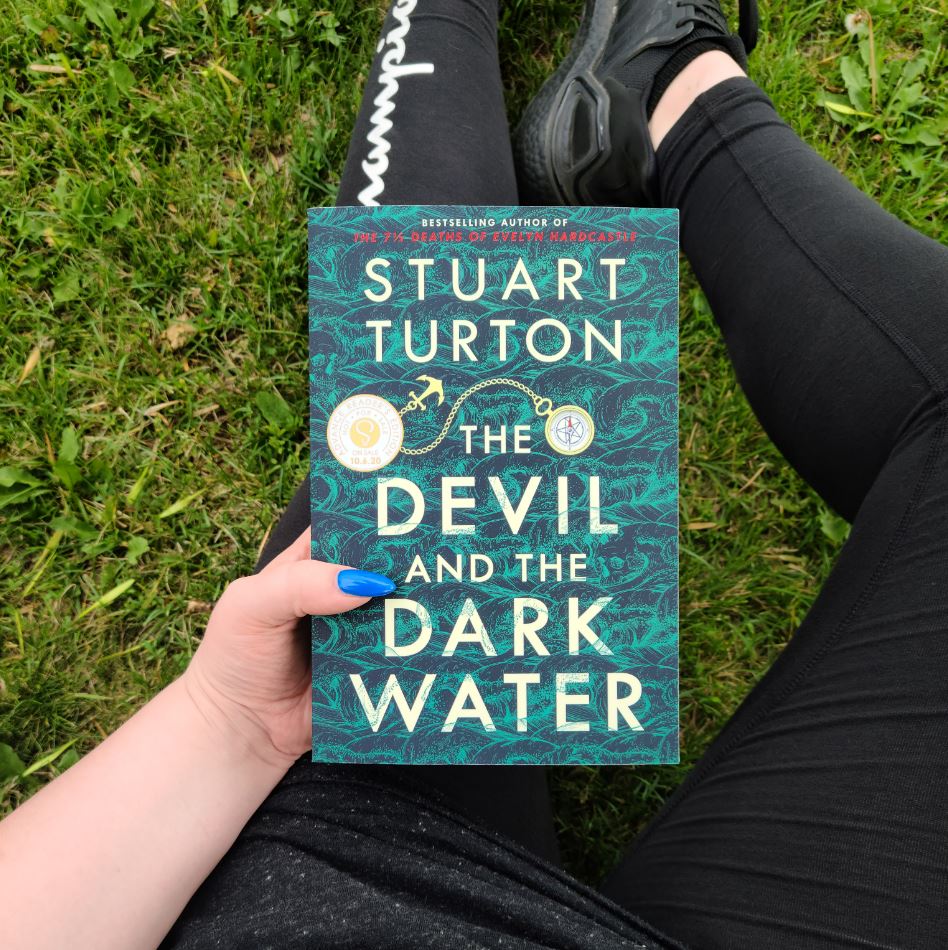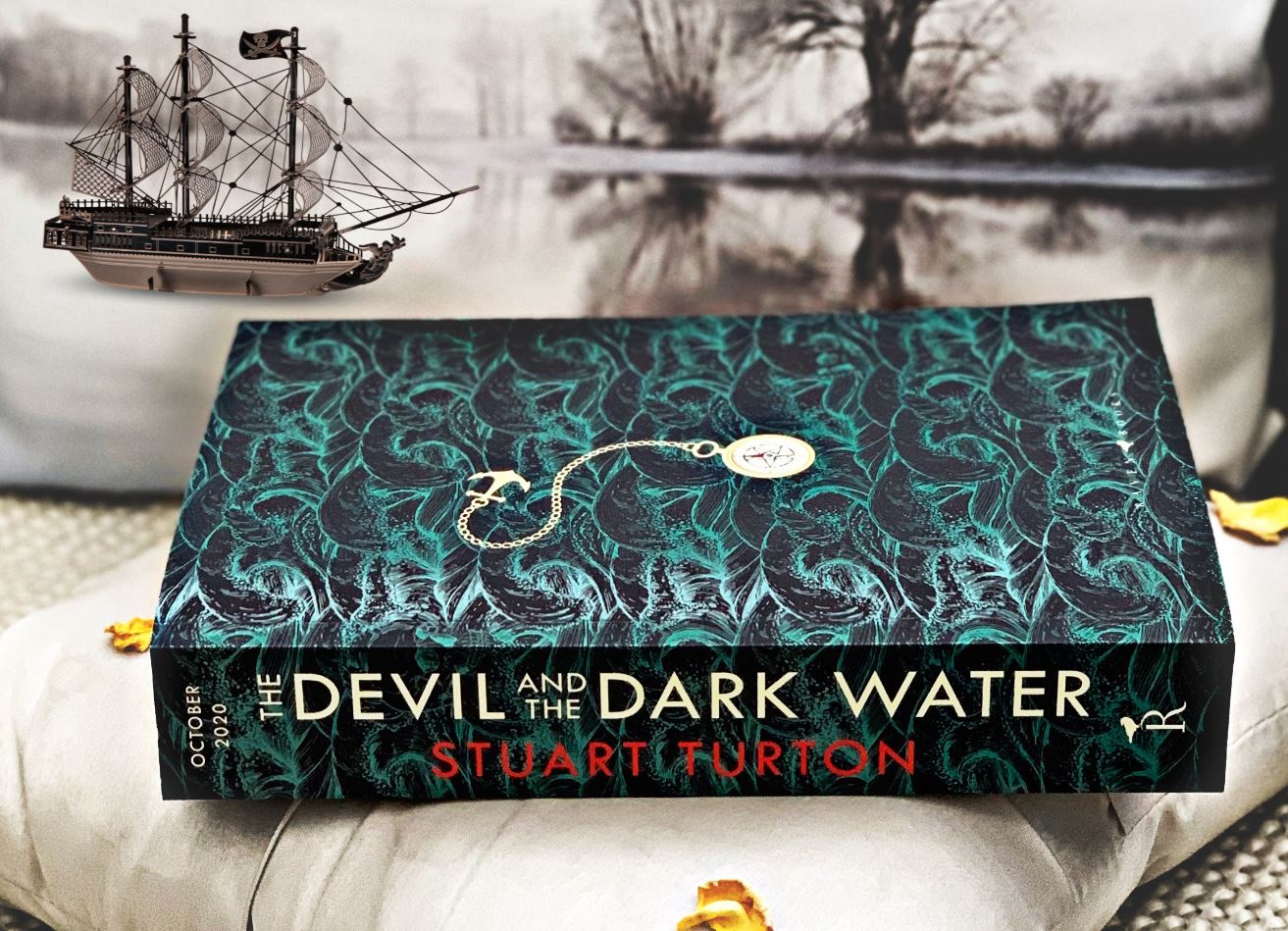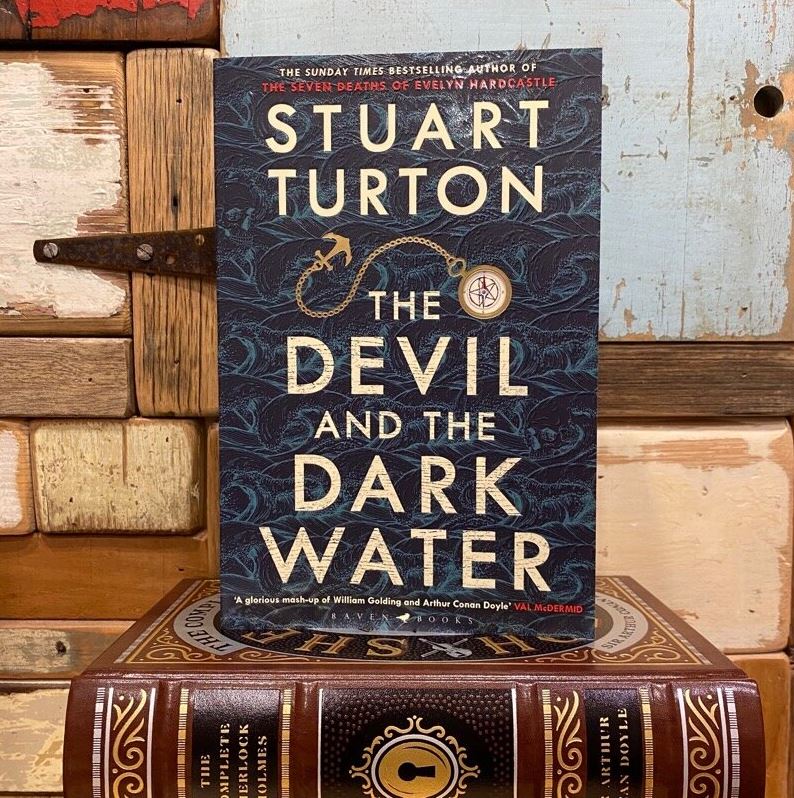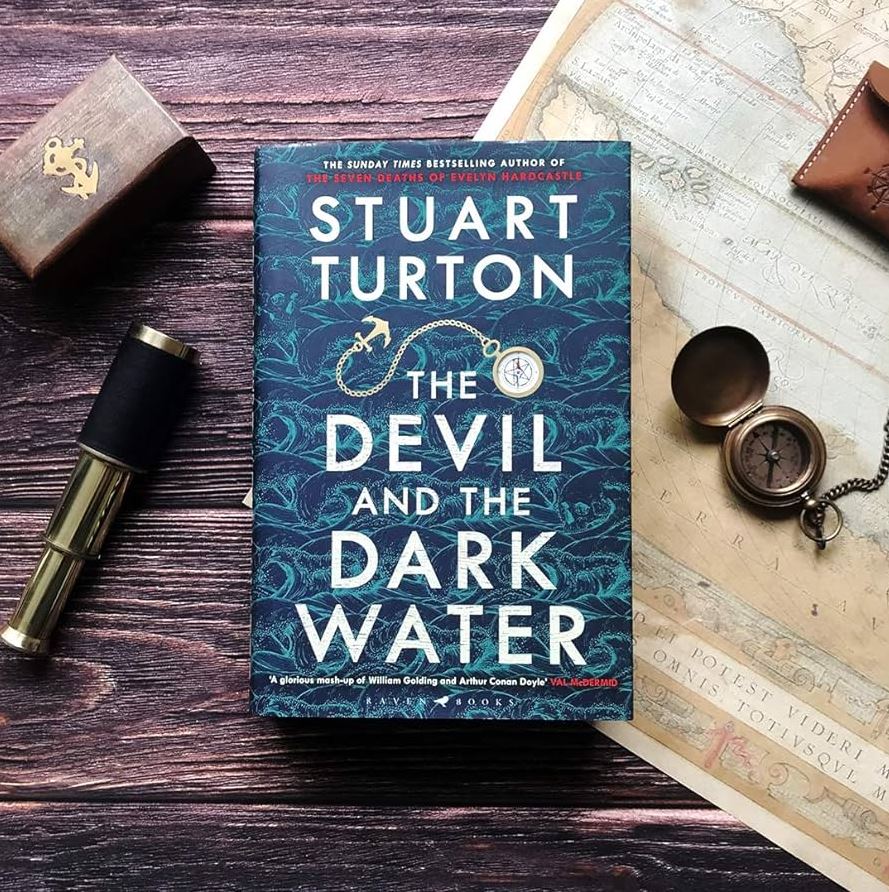Exploring the Depths of Mystery The Devil and the Dark Water
Stuart Turton emerged as a distinctive voice in contemporary fiction with his debut novel, “The Seven Deaths of Evelyn Hardcastle,” which was lauded for its inventive twist on the murder mystery genre. Building on this innovative approach, Turton’s second novel, “The Devil and the Dark Water,” further cements his reputation as a master of complex narratives and intricate plots. Published in 2020, this novel diverges from his first work by delving into a rich historical setting, blending elements of mystery, horror, and historical fiction into a seamless narrative tapestry.
“The Devil and the Dark Water” is set in the year 1634, a period rife with maritime exploration and trade, which Turton vividly brings to life. The story unfolds on the Saardam, an East Indiaman ship, making its perilous journey from Batavia (modern-day Jakarta) to Amsterdam. This setting is not just a backdrop but a crucible for the unfolding drama, as the confined and isolated environment of the ship amplifies the suspense and complexity of the narrative.
Turton’s style is characterized by his ability to weave multiple genres into a single, cohesive story. In “The Devil and the Dark Water,” he skillfully combines the detailed setting of historical fiction with the suspense and twists of a murder mystery and the chilling elements of horror. This genre-bending approach allows Turton to explore the darker aspects of human nature and the supernatural, all while constructing a layered plot that challenges the reader’s perceptions and expectations. The novel not only entertains but also engages with its deep historical context, making it a standout example of Turton’s unique approach to storytelling.
| Aspect | Details |
|---|---|
| Title | The Devil and the Dark Water |
| Author | Stuart Turton |
| Publication Year | 2020 |
| Setting | 1634, aboard the Saardam ship from Batavia to Amsterdam |
| Genre | Mix of mystery, horror, and historical fiction |
| Style | Complex narrative with a blend of multiple genres, exploring dark aspects of human nature and the supernatural |
| Significance | Illustrates Turton’s skill in genre-bending and complex storytelling; deep historical context enriches the narrative |
Plot Summary
“The Devil and the Dark Water” by Stuart Turton is a riveting novel that transports readers aboard the Saardam, a 17th-century ship bound from Batavia to Amsterdam in 1634. The narrative begins under grim circumstances as Samuel Pipps, the world-renowned detective of the Dutch East India Company, is arrested for an unspecified crime. Despite his incarceration, Pipps’s presence looms large throughout the story, with the central mystery unfolding around him and his loyal bodyguard, Arent Hayes.

As the Saardam sets sail, a foreboding atmosphere grips the ship when a leper prophesizes doom, declaring that the ship will never reach its destination before spontaneously combusting into flames. This unsettling event sets the tone for a voyage filled with sinister occurrences and moral quandaries. The passengers include a diverse cast, from the tyrannical Governor-General Jan Haan and his suffering wife Sara to the mysterious Creesjie, Haan’s mistress, who harbors secrets of her own.
The plot thickens with the mysterious murder of Jan Haan, found stabbed in his locked chamber, setting off a chain of events that unravels the lives of everyone aboard. As Arent Hayes takes up the mantle of detective in Pipps’s stead, he uncovers layers of deceit, betrayal, and supernatural hints all pointing towards an ancient demon known as Old Tom.
A major twist reveals that Creesjie is actually Emily de Haviland, assumed to be dead, and Pipps is her brother Hugo. They orchestrated a haunting on the ship to avenge the downfall of their noble family, spurred by false accusations of witchcraft. The plot masterfully combines elements of horror with a murder mystery, culminating in a revelation that the supposed supernatural occurrences are part of an elaborate revenge plot against those who wronged them.
| Element | Details |
|---|---|
| Setting | 1634, aboard the Saardam ship from Batavia to Amsterdam. |
| Main Characters | Samuel Pipps (incarcerated detective), Arent Hayes (bodyguard), Jan Haan (Governor-General), Sara Haan, and Creesjie (Emily de Haviland). |
| Initial Conflict | Samuel Pipps is arrested for an unspecified crime as the Saardam prepares to sail. A leper prophesizes doom for the ship, foretelling that it will never reach Amsterdam. |
| Mystery and Supernatural Elements | Mysterious murder of Jan Haan and sinister occurrences linked to an ancient demon called Old Tom. |
| Plot Twist | Creesjie is revealed to be Emily de Haviland, Pipps’s sister, orchestrating a haunting to avenge their family’s downfall due to false witchcraft accusations. |
| Resolution | The supernatural occurrences are revealed to be part of an elaborate revenge plot, with the real challenge being the unraveling of this scheme aboard the ship. |
| Themes | Deceit, betrayal, revenge, and the thin line between supernatural beliefs and human manipulations. |
Major Themes
Through the characters of Sara and her daughter Lira, Turton explores feminist themes in a historical context where women’s voices were often suppressed. Sara’s evolution from a victim of domestic abuse to a key figure in unraveling the ship’s mysteries showcases her resilience and intelligence. This shift not only serves the plot but also comments on the broader societal constraints on women during the era, highlighting their often-underestimated capabilities.

The recurring symbol of Old Tom plays a pivotal role in the novel, serving as a MacGuffin that drives the plot forward. Initially linked to supernatural forces and past tragedies, the symbol embodies the fear and superstition prevalent in the 17th century. However, its significance evolves as the story progresses, revealing deeper layers of manipulation and human malevolence rather than genuine demonic activity.
At its core, the novel is a profound meditation on revenge and justice. The characters of Pipps and Emily, under the guise of avenging their family’s unjust downfall, orchestrate a complex scenario to expose and punish the true villains of their past. Their actions raise ethical questions about the nature of justice and whether ends justify means. This theme is intricately linked to the plot’s twists and the characters’ motivations, offering a rich ground for reflection on the balance between personal vendetta and moral righteousness.
In conclusion, “The Devil and the Dark Water” weaves a complex tapestry of mystery, historical drama, and philosophical questions, making it a compelling read that transcends the typical boundaries of genre fiction.
| Theme/Symbol | Details | Impact |
|---|---|---|
| Feminist Themes | Sara’s transformation from a victim of domestic abuse to a key figure in solving the ship’s mysteries, alongside her daughter Lira. | Highlights the resilience and intelligence of women, challenging societal constraints and showcasing their underestimated capabilities. |
| Symbol of Old Tom | Initially linked to supernatural forces, the symbol evolves to represent manipulation and human malevolence, driving the plot forward. | Embodies the fear and superstition of the 17th century, shifting to reveal deeper layers of human deception rather than demonic activity. |
| Revenge and Justice | Pipps and Emily orchestrate a complex scenario to expose and punish those responsible for their family’s downfall. | Raises ethical questions about the nature of justice, the justification of means by ends, and the balance between personal vendetta and moral righteousness. |
| Historical and Philosophical Depth | The novel integrates historical drama with philosophical questions, weaving complex narratives that go beyond typical genre boundaries. | Provides a rich ground for reflection on historical accuracy, ethical dilemmas, and the human condition, enhancing its appeal as a profound literary work. |
Style and Structure
Stuart Turton’s “The Devil and the Dark Water” exemplifies a sophisticated narrative style that intertwines historical settings with complex storytelling techniques. Turton creates a meta-awareness within his characters, a stylistic choice that subtly nods to the readers’ awareness of being part of a literary construct. This approach is particularly evident in the way characters often reference past cases solved by Samuel Pipps and Arent Hayes, hinting at a richer backstory akin to a series of prequel novels that exist just beyond the pages. This technique not only deepens the narrative but also engages readers in a sort of literary game, where they can imagine the protagonists’ previous adventures.

Turton pays a meticulous homage to traditional mystery and horror tropes throughout the novel. The setting on a doomed ship lends itself to the classic “locked-room” mystery, while the supernatural elements and the eerie prophecy echo the traditional horror genre. By blending these elements, Turton respects the conventions of the genres he draws from while simultaneously subverting them to keep the narrative fresh and unpredictable.
| Element | Technique/Influence | Impact on Narrative |
|---|---|---|
| Meta-awareness in Characters | Characters reference past cases, suggesting a series of unseen adventures that enrich the current narrative context. | Creates a literary game that engages readers, inviting them to imagine the characters’ past experiences and enhancing depth. |
| Homage to Mystery and Horror Tropes | Utilizes the “locked-room” mystery setup and integrates supernatural elements and prophecies reminiscent of traditional horror. | Respects and subverts classic genre conventions, maintaining reader interest with a fresh and unpredictable narrative. |
| Blending of Genres | Combines elements of mystery, horror, and historical fiction within a cohesive narrative framework. | Enriches the storytelling by providing multiple layers of intrigue and complexity, appealing to a broad range of literary tastes. |
Character Via Video Analysis
Samuel Pipps and Arent Hayes form a detective duo reminiscent of the classic pairings found in literary history, such as Sherlock Holmes and Dr. Watson. Pipps, like Holmes, is the brilliant mind renowned for his deductive powers, while Hayes, similar to Watson, serves as the loyal assistant whose bravery and moral compass are indispensable to the narrative. However, Turton deviates from the traditional roles by placing Pipps in a situation where he is incapacitated, thus thrusting Hayes into the role of the primary investigator. This inversion of roles adds a fresh dynamic to the familiar archetype, allowing Hayes to evolve beyond the role of sidekick to a fully realized character capable of leading the investigation.
Sara’s character development is central to the feminist themes of the novel. Initially portrayed as a victim of her abusive husband, Sara’s journey aboard the Saardam sees her transforming into a key figure in unraveling the mystery. Her growth is marked by her increasing assertiveness and intelligence, challenging the period’s gender norms. Sara’s character not only drives the plot but also serves as a beacon of resilience, showcasing the strength required to overcome personal and societal challenges.
Creesjie, who is revealed to be Emily de Haviland, undergoes one of the most dramatic transformations in the novel. Initially introduced as a mere mistress, her character is later unveiled as a mastermind of revenge. This revelation recontextualizes her earlier actions and her relationship with other characters, adding layers of depth to her motivations and actions. Creesjie/Emily’s transformation is pivotal not only for the plot’s progression but also highlights themes of identity, revenge, and redemption.
In conclusion, “The Devil and the Dark Water” by Stuart Turton is a compelling amalgamation of style and substance. Turton’s narrative style cleverly pays tribute to traditional literary genres while innovating within them. The character arcs of Pipps, Hayes, Sara, and Creesjie are meticulously crafted, each adding richness to the story and embodying the novel’s deeper themes. Through these characters, Turton explores classical detective dynamics, challenges societal norms, and delves into the complexities of human emotions and motivations, making the novel a profound study in character and narrative structure.
| Character | Role and Development | Thematic Contribution |
|---|---|---|
| Samuel Pipps | Brilliant detective, incapacitated, forcing his assistant Hayes into the role of primary investigator. | Challenges the classic detective-sidekick dynamic, enhancing the narrative with a fresh perspective on leadership and competence. |
| Arent Hayes | Evolved from the loyal assistant to a capable leader of the investigation, showcasing bravery and moral integrity. | Represents the growth of a secondary character into a protagonist, reflecting themes of personal development and independence. |
| Sara | Transforms from a victim of abuse to a key figure in solving the mystery, overcoming personal and societal challenges. | Embodies feminist themes by challenging gender norms and showcasing resilience and intelligence. |
| Creesjie / Emily de Haviland | Revealed as the mastermind behind the revenge plot, transforming from a perceived mistress to a pivotal character. | Highlights themes of identity, revenge, and redemption, adding complexity to her motivations and actions in the narrative. |
The Evolution and Cultural Impact of Soda Fountains
Therapis A Unique Genus in the Family Geometridae
Paolo Canevari Symbols, Myths, and Modern Art
Exploring the Traditional British Dish Faggots
Exploring the Many Facets of Camou
The Evolution of the Primary School Leaving Examination
Newkirk Plaza Station A Century of Service and Renovation

